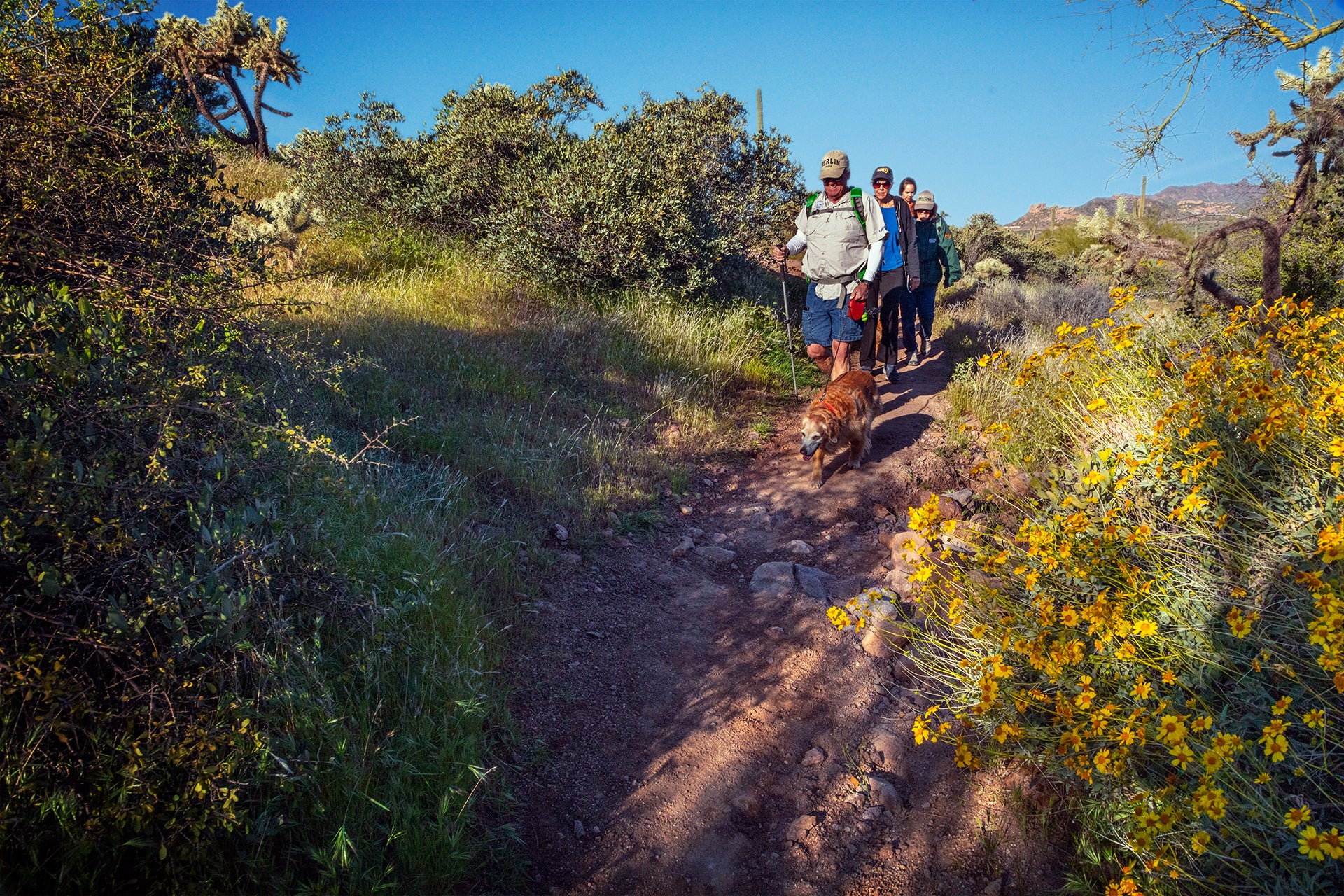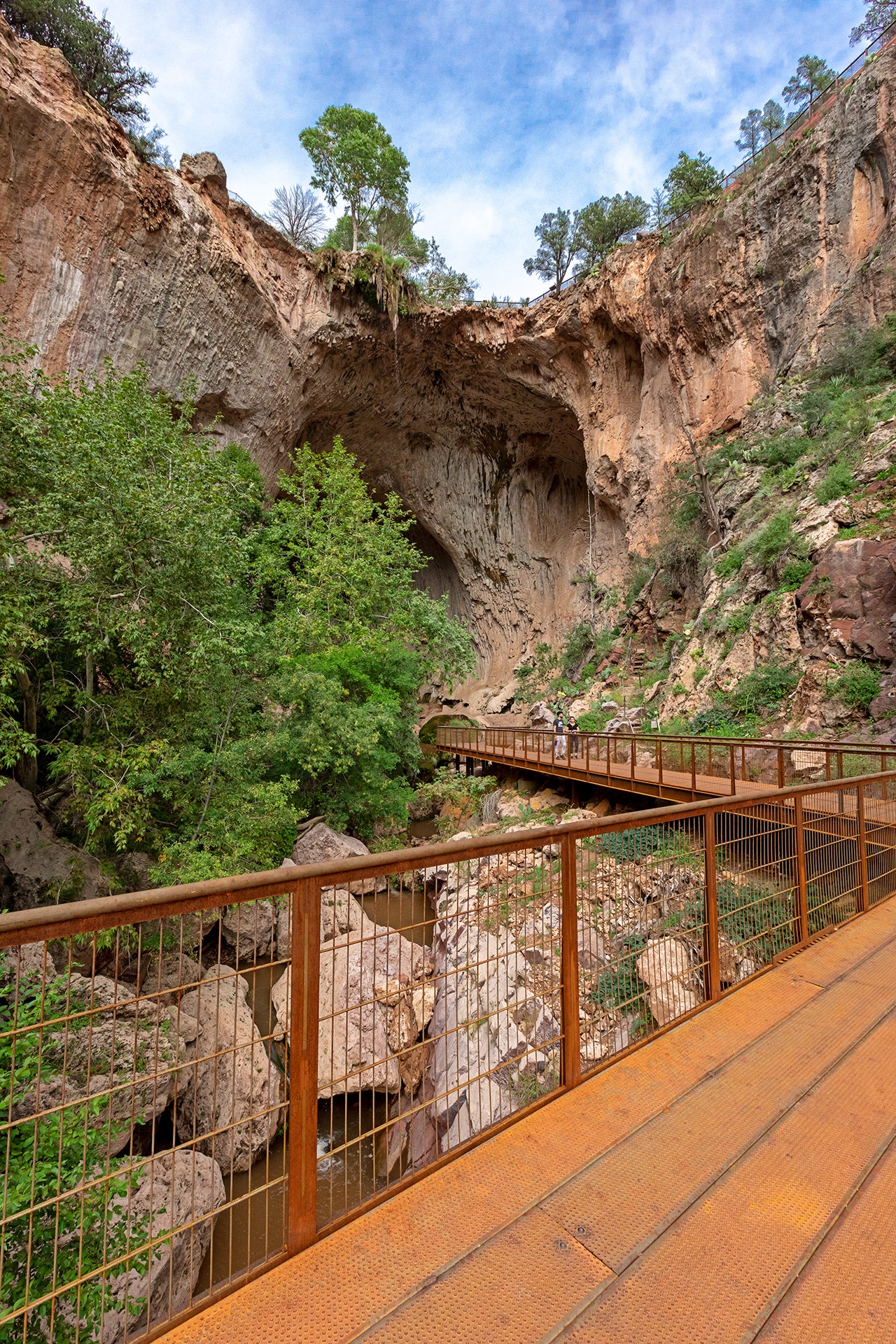ASU team helps Arizona plan future of public lands

Hikers look toward Hunters Peak at Picacho Peak State Park. Photo courtesy of Arizona State Parks and Trails
Whether they are exploring the mammoth caves of Kartchner Caverns near Benson, quietly paddling a canoe past granite boulders along Watson Lake in Prescott or hiking in the awe-inspiring Grand Canyon, Arizonans love their public lands.
An Arizona State University team is gathering the viewpoints of dozens of outdoor recreation stakeholders toward improving how millions of acres of public lands are managed.
So far, respondents have expressed concerns about the ravages of drought and wildfires, the blight of trash and vandalism, and the toll that overcrowding and overuse can take on nature, said Gyan Nyaupane, a School of Community Resources and Development professor who leads the team.
They also want to make sure that public lands achieve the right balance between conservation and recreation, and that public lands are accessible and inclusive for everyone, including underrepresented groups of people, such as those with disabilities and members of BIPOCBlack, Indigenous and people of color and LGBTQ communities, he said.
Through next month, the team will continue to collect opinions from the public, private and nonprofit sectors. The viewpoints will assist Arizona State Parks and Trails in the creation of the Statewide Comprehensive Outdoor Recreation Plan, which will guide managers for five years starting in 2023, Nyaupane said. The current plan has been in effect since 2018.
“One requirement of the plan is to have wide stakeholder involvement, so we sought input from as diverse sources as possible,” Nyaupane said. “We tried to get as many perspectives as possible: communities of color, tribal groups, communities with mobility challenges, the LGBTQ community.”
The opinions are important because public lands are public, Nyaupane said.
“Everyone should have access to them, but some groups don’t have as much access, as they are underrepresented groups,” he said. “Public land is very critical for Arizona’s economy and the well-being of Arizonans.”
Plan will cover all public lands in Arizona
Arizona’s public lands are popular destinations. In June 2021, Arizona State Parks and Trails reported that the state parks alone had nearly 3 million visitors in the fiscal year ending in June 2020.
The recreation plan will guide management of all public lands in the state, not only the state parks, Nyaupane said. Like similar documents being written for the other 49 states, Arizona’s plan will be effective after Gov. Doug Ducey and the National Park Service certify it for implementation.
Nyaupane, who is also the Watts College of Public Service and Community Solutions’ associate dean for research, said his team includes Dale Larsen, a School of Community Resources and Development professor of practice and former Phoenix parks and recreation department director, and two PhD students, Tanner Caterina-Knorr and Connor Clark. So far they have completed virtual sessions and focus groups with around 100 individuals and organization representatives. Nyaupane said it is the third such plan that he has worked on.
Nyaupane said some of the priority issues they are identifying include concerns about:
- How factors such as the spread of COVID-19 and population growth have affected public land use.
- Sufficient funding for improving and managing facilities on public lands.
- Creating more collaboration and partnerships for adaptive and responsible management.
- The need for more sustainable and innovative infrastructure and amenities.
The stakeholders include members of recreation clubs, such as those engaged in hiking or mountain biking; public land managers; private business owners; ranchers; mining companies; members of the tourism and hospitality industries; and government officials from several jurisdictions. Surveys will also be conducted with samples of Arizona households and outdoor recreation providers.
A dog leads hikers down a trail at Lost Dutchman State Park. Photo courtesy of Arizona State Parks and Trails
Federal matching funds to be available
A Statewide Comprehensive Outdoor Recreation Plan is required to obtain federal Land and Water Conservation Fund money to protect natural areas, water resources and cultural heritage, and to provide recreation opportunities, Nyaupane said.
Once the plan is certified, Arizona will be eligible to receive money from the Land and Water Conservation Fund, which the National Park Service manages. The fund, which contains about $900 million, is composed of leasing fees that energy companies pay the U.S. government to search for oil and gas beneath federal land.
The fund will match a state or local authority’s allocation for a public outdoor recreational purpose with federal funds, Nyaupane said.
Dawn Collins, an Arizona State Parks and Trails project manager, said the views Nyaupane’s team is collecting are important to the plan’s success.
“We want to hear from as many people as possible about what matters to them in outdoor recreation,” said Collins, who works in the agency’s Office of Continuous Improvement.
Collins said her agency’s website will offer an online survey that will give more Arizonans an opportunity to contribute their opinions. It will be available soon at azstateparks.com/scorp.
“We hope that the information that we collect through surveys, our stakeholder outreach and the SCORP webpage will reach more people than ever before,” Collins said.
Reaching underrepresented people rewarding to student researchers
Tonto Natural Bridge State Park near Pine, Arizona. Photo courtesy of Arizona State Parks and Trails
Clark, one of the doctoral students on the team, said working on the project taught him the importance the wide variety of stakeholders’ opinions will have on the future of Arizona public lands.
“One of the coolest parts of working on this project is that the findings from our surveys and focus group meetings really have the ability to influence outcomes for outdoor recreation in Arizona,” Clark said.
“The state faces many challenges regarding outdoor recreation, such as overcrowding, staffing shortages and lack of diversity in outdoor spaces. But our SCORP project is tackling these challenges head on through our direct interactions with recreation stakeholders,” Clark said. “I am especially proud that our team has made great efforts to include underrepresented populations in this project and report on the challenges that they face while engaging in outdoor recreation activities in Arizona.”
Doctoral student Caterina-Knorr found the work both interesting and important.
“The research process has been very eye-opening because we have been able to hear from so many different people with different backgrounds and experiences. Giving the space for these experiences to be heard has expanded our understanding of what it means to recreate,” Caterina-Knorr said. “These stories and insights add depth to the project, allowing us to reinterpret stakeholder perspectives in different ways. For me, this project and our upcoming report are for these voices, as we gratefully and creatively craft ways to foreground and illuminate these human experiences within outdoor recreational spaces.”
Nyaupane said the team’s involvement provided ASU with a good opportunity to engage with public land management agencies and nonprofit organizations, and connect with their representatives.
“This is a user-inspired effort to help them solve some of the issues they are facing,” he said. “People from different sectors are involved. They see ASU as a resource to help solve some of these issues.”
More Environment and sustainability

'Earth Day Amplified' promotes power of collective action
Everybody loves the concept of sustainability. They want to do their part, and the chance to say they’ve contributed to the well-…

Rethinking Water West conference explores sustainable solutions
How do you secure a future with clean, affordable water for fast-growing populations in places that are contending with unending…
Meet the young students who designed an ocean-cleaning robot
A classroom in the middle of the Sonoran Desert might be the last place you’d expect to find ocean research — but that’s…



